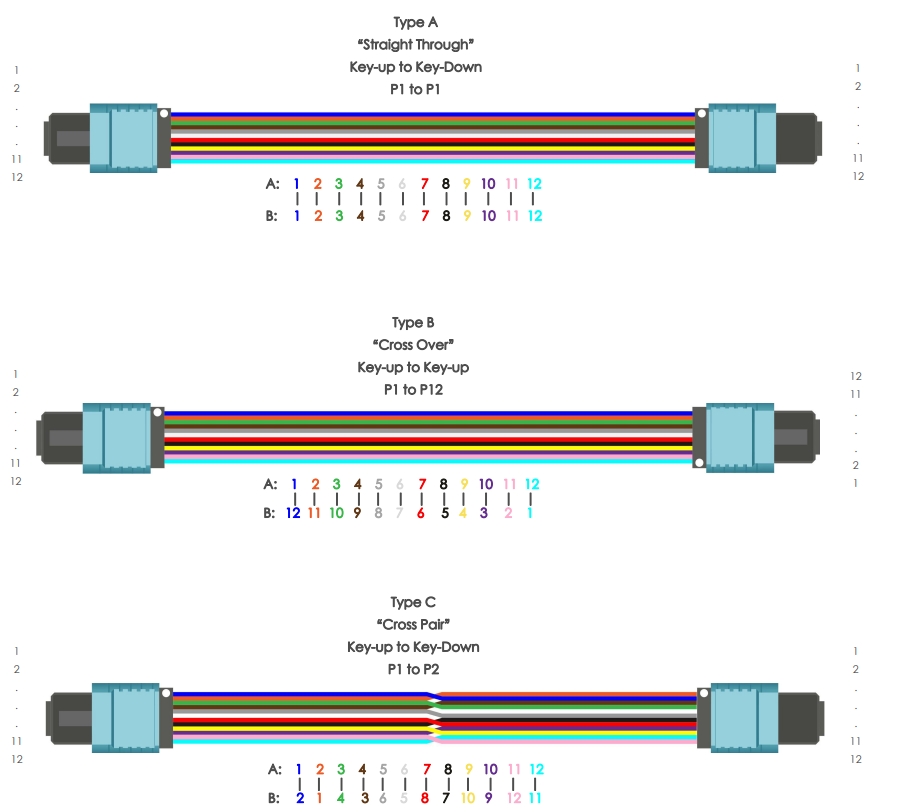In the world of high-speed data transmission, the role of fiber optics is paramount. Within this realm, the significance of fiber polarity, especially in MPO/MTP cables, cannot be overstated. Let’s delve into the intricacies of fiber polarity and its crucial connection to the efficiency of MPO/MTP cables.
Introduction to Fibre Polarity and MPO/MTP Cables
In the digital age, where data is the lifeblood of communication, fiber optics play a pivotal role. These thin strands of glass or plastic transmit data using light signals, enabling high-speed and large-capacity communication. In this landscape, fiber polarity becomes a key factor in ensuring seamless data transmission. In any installation, it is important to ensure that the optical transmitter at one end is connected to the optical receiver at the other. This matching of the transmit signal (Tx)to the receive equipment (Rx) at both ends of the fiber optic link is referred polarity.
Importance of Proper Fiber Polarity
Incorrect fiber polarity can lead to signal loss, increased bit error rates, and compromised data integrity. Ensuring proper polarity is, therefore, essential to achieving optimal performance from MPO/MTP cables.
Polarity Methods in MPO/MTP Cables
MPO/MTP cables follow specific polarity methods, such as Method A, Method B, and Method C. Each method has its advantages and drawbacks, influencing the choice based on the specific needs of a network.
Type A MPO Patch Cable
Type A cables are also known as straight cables. They are the simplest MPO cables to understand. Each cable is sequenced 1-12. Since the cable is straight, the 1 node on each end is in the same spot relative to the sequence. The same is true for each of the fiber lines. But, if you recall the basic polarity example, this means that a Type A MPO cable cannot connect Tx to Rx without something to fix the polarity. We’ll cover that in a minute.
Type B MPO Patch Cable
Type B cables are known as reversed cables. They’re still pretty simple. Whereas Type A cables run in a straight line and the 1 node matches the 1 node on the other end, Type B reverses this. So, you’ll have 1-12 on one end and 12-1 on the other end. That means that a Type B cable can connect Tx to Rx without additional equipment.
Type C MPO Patch Cable
Also known as pairs of flipped cables, these are the most complicated of the three. In Type C, each pair of strands is flipped along the run of the cable. That means 1 and 2 swap places, 3 and 4 swap places, and so on. You can see why this type of cable requires a little extra thought to use effectively.

Common Issues with Fiber Polarity
Understanding common problems related to fiber polarity, such as misalignment or mismatch, is vital for troubleshooting and ensuring the smooth operation of MPO/MTP cables.
Conclusion
In conclusion, the world of MPO/MTP cables and fiber polarity is intricate but vital for seamless data transmission. Adhering to best practices, understanding different polarity methods, and staying informed about industry advancements are key to maintaining efficient network infrastructure.

